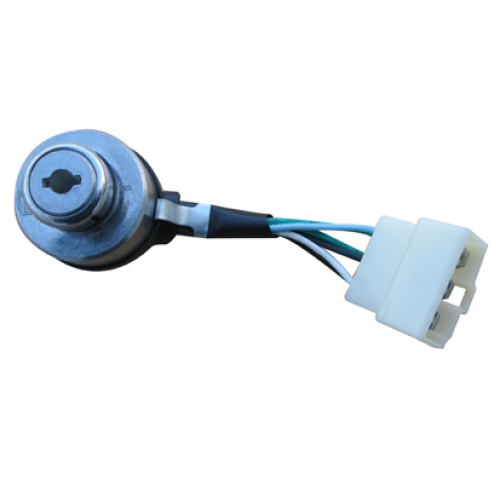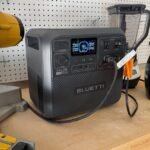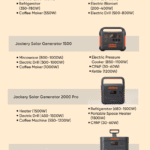Disclosure: This post contains affiliate links and I will be compensated if you make a purchase after clicking through my links. Learn More
Bypassing an ignition switch on a generator can be straightforward. This guide will show you how.
Generators are vital for backup power. Sometimes, the ignition switch fails. Knowing how to bypass it can save you time and stress. Safety is key. Ensure you follow steps carefully. This method can get your generator running again. Let’s explore how to do it.
Introduction To Ignition Switch Bypass
Ignition switches on generators can sometimes fail. Understanding how to bypass an ignition switch can be useful. This knowledge can help you in emergencies. It can also save time and money.
Purpose And Benefits
Bypassing the ignition switch can start the generator quickly. It allows you to use the generator even if the switch is faulty. This can be crucial during power outages. It also ensures the generator remains a reliable backup power source.
Knowing this technique can extend the life of your generator. You can avoid frequent repairs. It provides peace of mind. You are prepared for unexpected situations.
Safety Considerations
Safety is vital when bypassing the ignition switch. Always make sure the generator is off before starting. Wear protective gloves and goggles. Keep a fire extinguisher nearby. Work in a well-ventilated area to avoid inhaling fumes.
Follow the generator’s manual. It might have specific instructions. Double-check all connections. Improper handling can cause damage or injury. Always prioritize safety.

Credit: www.youtube.com
Tools And Materials Needed
To bypass the ignition switch on a generator, you need specific tools and materials. Having the right equipment will make the process easier and safer. Below are essential tools and recommended materials for this task.
Essential Tools
You will need a screwdriver. Choose one that fits the screws on your generator. A wrench set is also necessary. Ensure you have different sizes. You will need pliers for gripping and holding parts. Wire cutters are essential for cutting wires. A multimeter helps to check electrical connections. You need a utility knife to strip wires.
Recommended Materials
You will need electrical tape. It insulates wires and prevents short circuits. Get a spool of electrical wire. Ensure it is the right gauge for your generator. Wire connectors are essential. They help join wires safely. Heat shrink tubing is useful. It provides a secure seal around wire connections. Have a pair of gloves for safety. A flashlight is helpful. It illuminates dark areas inside the generator.
Preparing The Generator
Before bypassing the ignition switch on your generator, proper preparation is essential. This ensures your safety and the generator’s functionality. Start by gathering all necessary tools and equipment. Follow the steps below to prepare your generator effectively.
Initial Safety Checks
First, ensure the generator is turned off. Disconnect it from any power source. Wear protective gear like gloves and safety glasses. Check for any signs of damage or wear on the generator. Make sure the area around the generator is clear of obstructions.
Locating The Ignition Switch
Find the ignition switch on your generator. It is usually near the control panel. Refer to the generator’s manual for precise location. Once found, examine the ignition switch for any visible damage. Make sure it is accessible for the next steps.

Credit: www.amazon.com
Disconnecting The Ignition Switch
Disconnecting the ignition switch on a generator allows you to bypass it. This process helps in starting the generator without the key.
Disconnecting the ignition switch on a generator can seem daunting, but it’s a manageable task if you follow the right steps. Whether you’re troubleshooting or performing maintenance, learning how to safely disconnect the ignition switch can save you time and headaches. Let’s delve into this essential procedure.
Step-by-step Guide
First, ensure the generator is off and completely cool. Working on a hot generator can be dangerous.
Locate the ignition switch. This is usually found near the control panel.
Disconnect the battery to prevent any accidental start-ups. Safety first!
Remove the ignition switch panel using a screwdriver. Keep the screws in a safe place.
Carefully disconnect the wires attached to the ignition switch. Label them if needed to remember their positions.
Finally, remove the ignition switch. You’ve successfully disconnected it.
Precautionary Measures
Always wear protective gloves and eyewear. Safety should always be your priority.
Double-check that the generator is off before you start. It’s easy to forget in the excitement of the task.
Keep your workspace organized. Misplacing screws or tools can delay your progress.
Avoid using excessive force. If something isn’t budging, you may be missing a step.
Keep children and pets away from your workspace. Distractions can lead to accidents.
Have you ever tried disconnecting an ignition switch? What challenges did you face? Share your experience in the comments below!
By following these steps, you can safely disconnect the ignition switch on your generator. Now, you’re ready to tackle more complex tasks with confidence.
Wiring The Bypass
Bypassing the ignition switch on your generator can be a straightforward process if you follow the correct steps. Before diving into the wiring, ensure you have all the necessary tools and safety gear. It’s essential to understand the wiring connections to avoid any mishaps.
Connecting Wires
Start by locating the ignition switch on your generator. It’s usually near the control panel. Identify the wires connected to the switch.
Disconnect these wires carefully. Pay attention to their colors and positions. This will help you reconnect them correctly later.
Use a jumper wire to connect the ignition wires directly. This will bypass the switch and allow the generator to start without it.
Testing Connections
Once you have connected the wires, it’s time to test your setup. Turn the generator on to see if it starts. If it does, you’ve successfully bypassed the ignition switch.
If the generator doesn’t start, double-check the connections. Ensure the wires are securely connected and not damaged.
It’s also wise to use a multimeter to check for continuity. This will confirm if the bypass is functioning correctly.
Have you ever tried bypassing the ignition switch on your generator? What challenges did you face? Share your experiences to help others in the comments below!
Reassembling The Generator
Learn how to bypass the ignition switch on your generator safely. Follow clear steps to reassemble the generator and restore its functionality.
Reassembling the Generator
After successfully bypassing the ignition switch on your generator, it’s crucial to reassemble the unit correctly. This step ensures the generator operates safely and efficiently. Let’s dive into the key steps you need to follow during reassembly.
Securing Components
First, you need to ensure all parts are properly aligned. Misalignment can lead to operational issues. Carefully place the ignition cover back into its original position.
Next, secure all screws and bolts. Use a screwdriver to fasten them tightly, but don’t over-tighten. Over-tightening can strip the screws and damage the components.
Remember to reconnect any wires you may have disconnected earlier. Double-check their positions before securing them. Incorrect wiring can cause short circuits or other malfunctions.
Final Safety Inspection
Before you power up the generator, do a final safety check. Look for any loose components or exposed wires. These can pose serious hazards.
Ensure all covers and guards are securely in place. These protect you from moving parts and electrical components.
Lastly, check the fuel lines for leaks. Leaking fuel can be extremely dangerous, leading to fire hazards. A quick inspection now can prevent a disaster later.
Reassembling your generator with care and precision sets the stage for reliable performance. Have you ever skipped a step in reassembly and faced issues later? Share your experiences in the comments below!
Testing The Bypass
Testing the bypass on your generator is crucial to ensure it starts and runs smoothly. When you’ve bypassed the ignition switch, you need to verify that the generator powers up properly and operates without issues. This step-by-step guide will help you through the process, ensuring you can troubleshoot any problems effectively.
Initial Power-up
Once you have bypassed the ignition switch, the first step is to power up your generator. Double-check all connections to make sure everything is secure and in place.
Turn on the generator. Listen for any unusual sounds. If it starts smoothly, you’re on the right track.
Make sure to observe the generator’s power output. A steady output indicates that the bypass is successful.
Troubleshooting Issues
If your generator doesn’t start, don’t panic. Begin by checking the fuel supply. Make sure there’s enough fuel and that it’s fresh.
Next, inspect the spark plug. A dirty or worn-out spark plug can prevent the generator from starting. Clean or replace it as needed.
Finally, check the wiring connections. Loose or damaged wires can cause issues. Secure any loose connections and replace any damaged wires.
Have you ever had to troubleshoot your generator before? What were the challenges you faced? Share your experiences below.

Credit: wenproducts.com
Maintenance And Upkeep
Maintaining your generator is crucial for its longevity and performance. Regular upkeep can prevent unexpected failures and costly repairs. Let’s dive into how you can keep your generator in top shape with regular inspections and solutions to common problems.
Regular Inspections
Inspecting your generator regularly is the first step to ensuring it runs smoothly. Check the oil levels and replace it if needed. Clean the air filters to avoid blockages.
Look for any signs of wear and tear, such as frayed wires or loose connections. Tighten any loose bolts and replace damaged parts immediately. Keeping an eye on these small details can save you bigger headaches later.
Don’t forget to test the generator by running it occasionally, even if you don’t need it. This helps to ensure that everything is working properly and can highlight potential issues before they become major problems.
Common Problems And Solutions
One common problem is the generator not starting. This could be due to a dead battery or a clogged fuel line. Check the battery and clean the fuel line to solve this issue.
Another issue is the generator running but not producing power. This might be caused by a tripped circuit breaker or a faulty alternator. Reset the breaker and inspect the alternator for any signs of damage.
Overheating is also a frequent problem. Ensure the cooling system is functioning properly and clean the radiator fins. Keeping the generator in a well-ventilated area can also help prevent overheating.
What other maintenance tips have you found useful for your generator? Share your experiences in the comments below!
Frequently Asked Questions
How Do You Force Start A Generator?
To force start a generator, turn the fuel valve on. Set the choke to “closed” and switch the ignition on. Pull the recoil starter cord briskly until the engine starts. Adjust the choke to “open” after starting. Ensure regular maintenance for optimal performance.
What Wires Go To The Ignition Switch?
The wires that go to the ignition switch typically include the battery, starter, ignition, and accessory wires. These wires connect the electrical system, enabling the vehicle to start and operate.
What Is The Most Common Reason A Generator Won’t Start?
The most common reason a generator won’t start is a dead battery. Check and replace if necessary.
How To Start A Generator That’s Been Sitting?
Check the fuel and oil levels. Clean the carburetor and air filter. Inspect spark plugs. Charge the battery. Start the generator.
Final Words
Bypassing the ignition switch on a generator can be handy. Always prioritize safety. Follow steps carefully to avoid damage. Understanding your generator is crucial. Knowing the process can save time and effort. With proper tools, the task becomes easier. Regular maintenance prevents future issues.
Remember, consult a professional if unsure. Your generator’s longevity depends on proper handling. Keep this guide handy for future reference. Happy troubleshooting!








